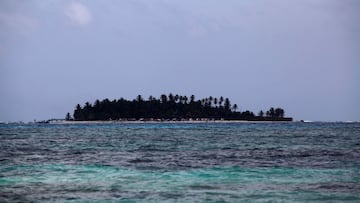WORLD
What are the richest countries in Latin America and the Caribbean? Income per capita | List by GDP
The wealth of Latin America is shaped by a complex mix of factors, including natural resources, location, political stability, and economic policies.

The wealth of Latin America and the Caribbean is shaped by a complex set of historical, social, political, and economic factors. They are diverse regions comprising of many countries with varying degrees of wealth, natural resources, and economic development.
They are regions rich in natural resources, including oil, minerals, and agricultural products. This has been a key driver of economic growth and development in some countries, particularly those with strong export industries. For example, countries like Brazil, Chile, and Peru have significant mineral resources that have helped to drive economic growth and development in recent years. Other nations have used tax law to encourage the world’s richest to live in the country, distorting their data.
According to data from the International Monetary Fund (IMF) as of 2022, the richest countries in Latin America and the Caribbean based on Gross Domestic Product (GDP) per capita by Purchasing Power Parity are:
- Aruba - $46,309
- Puerto Rico - $43,280
- Guyana - $42,647
- Bahamas - $39,785
- Panama - $36,370
- Trinidad and Tobago - $29,797
- Chile - $28,887
- Saint Kitts and Nevis - $27,782
- Uruguay - $27,233
- Argentina - $26,074
- Costa Rica - $24,837
- Dominican Republic - $24,120
- Mexico - $22,440
- Antigua and Barbuda - $22,070
- Colombia - $18,693
- Grenada - $18,436
- Brazil - $17,684
- Suriname - $17,350
- Barbados - $17,314
- Saint Lucia - $16,417
- Saint Vincent and the Grenadines - $15,786
- Peru - $15,273
- Paraguay - $14,528
- Dominica - $13,030
- Ecuador - $12,763
- Jamaica - $11,962
- El Salvador - $10,576
- Bolivia - $9,933
- Guatemala - $9,931
- Belize - $9,623
- Nicaragua - $7,154
- Venezuela - $7,108
- Honduras - $6,769
- Haiti - $3,166
Some nations have no measure of GDP per capita and are not included in the IMF data. This includes many of the smaller Caribbean islands such as Cayman Islands and St. Pierre and Miquelon, though the tax laws in these countries put them high up in GDP per capita rankings of other measurement bodies like the World Bank.
What does GDP per capita and Purchasing Power Parity mean?
GDP PPP per capita is a measurement of a country’s economic output that accounts for its purchasing power. It is calculated by taking the Gross Domestic Product (GDP) of a country and dividing it by its population, then adjusting for the differences in cost of living between countries.
PPP stands for Purchasing Power Parity, and is a method used to compare the economic output of countries by taking into account the different prices of goods and services in each country.






